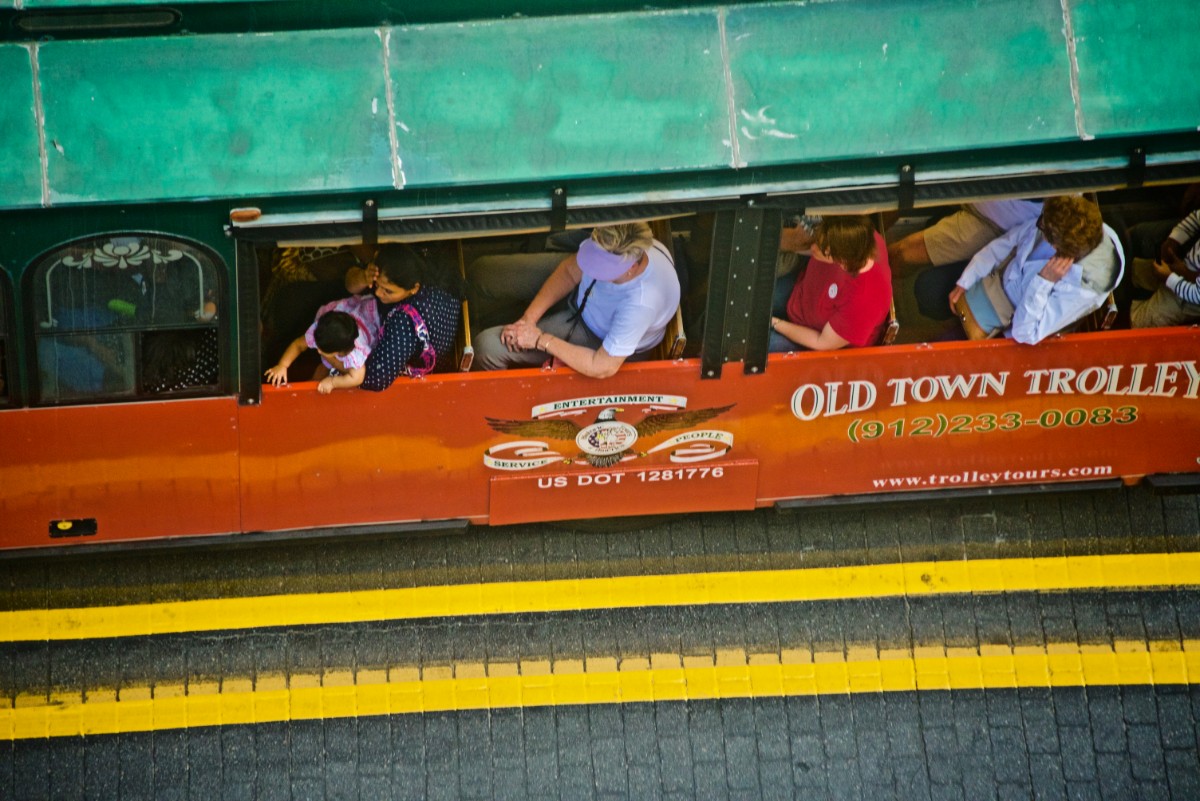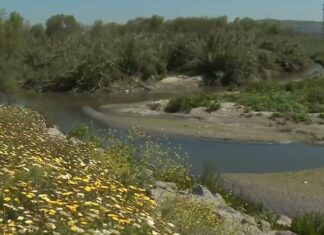If you’ve ever been on a historic tour through San Diego or any other city of colonial America, you’ve likely received an incomplete version of the indigenous roots of the place. The constructed histories of colonial San Diego made possible by the enslavement and expulsion of the local Kumeyaay tribe members since 1602, the California Gold Rush post-the 1848 Treaty of Guadalupe Hidalgo, and the establishment of Tijuana as a border tourist attraction economically catering to the North American demand for pleasure during the U.S. Prohibition Era, are cases-in-point of this touristic erasure. The still-contested 1848 treaty violated the previous agreement of the 1821 Adams-Onís Treaty and forced Mexico to cede 55 percent of its land to the United States, dividing tribes of the Kumeyaay and other indigenous groups along the 1,954-mile border, incarcerating them in missions and later, on reservations. The tourist version of the story nearly always glosses over the more difficult or unpleasant parts, or unequivocally changes them to maintain the city’s economic benefit of the industry, although literati and artists on both sides have made this contested border history a central subject matter of their work. What is clear is that these stories have no beginning or origin. Rather, these sugarcoated histories find their roots in the reenactments of repetition —— the repeated erasure of history through the global industry of tourism. The recursive replacement over time of one oral history with another.
Art research is an important tool for rethinking “historical” reenactments as performances of the space, rather than taking them for granted as “the truth.” Border Trolley Tours by Kate Clark and Cog•nate Collective’s Amy Sánchez and Misael Díaz are pushing this idea past its limit.
As the host project to Border Trolley tours, Clark’s Parkeology is a historical-artistic endeavor to excavate and rethink the narrative language of tourism, urban design and archive spaces. Border Trolley Tours are happening this month, an invitation for San Diegans to experience a different vein of historic tourism through the critical eyes and ears of local transborder artists.
On June 10th, 17th and 24th, in a performative “commandeering” of the Old Town Trolleys, Sánchez, Díaz and Clark will revive the old route of the San Diego-“Tia Juana” tour, leading groups of participants on stops between the park and the border. If you plan on attending, you might find the history of the park’s development is an important piece of background information to consider beforehand.
When Balboa Park was founded in 1868, park commissioners named it after Vasco Núñez de Balboa, a European explorer who first saw the Pacific in 1513. This tied the history of the park by name to the sublimated violence of colonial history, and the erasure of the indigenous Kumeyaay oral histories, colonial conquest and resistance and practices of the land. By 1909, only a hundred of Balboa Park’s 1,400-acre lands had been landscaped. To attract attention and investment to the park, San Diego Chamber of Commerce President G. Aubrey Davidson decided to host a celebration marking the Panama Canal’s opening scheduled for January 1st of the following year. As the first U.S. port North of the canal, San Diego was full of stakeholders who sought to exploit their geographic position to boost the local economy and to accrue investment interests in the park’s development. New York architect Bertram Goodhue who was commissioned to develop Balboa’s buildings, chose a Spanish Colonial Revival style for the 1915 Panama–California Exposition, which would distinguish the style of Balboa Park’s event from the San Francisco Panama–Pacific Exposition’s “Beaux Arts” aesthetic. The event included trolley tours between the park and Tijuana, at that point separated from San Diego by little more than a line in the dirt. Over time, as we know, the border would become the territory of hyper-militarized national security infrastructure, operated by the Department of Homeland Security. Meanwhile, we attend tours that claim to educate us about the history of the space, about the mutual cooperation between the Kumeyaay and the settlers. To interrupt and challenge this narrative, Border Trolley Tours will engage in an experimental repurposing of the classic tour by way of an imaginative remapping.
Parkeology and Cog•nate Collective will join the members of the Kumeyaay Nation and Casa Familiar’s San Ysidro teen docent program to reexamine the tourist history by repurposing tour trolleys for three days for the use of South Bay San Diego residents, an audience traditionally excluded from Balboa Park. The programming is aimed at creating opportunities for open dialogue and a multi-faceted transgenerational knowledge exchange. San Diego Trolley services will provide free round trip visits to Balboa Park for San Ysidro locals. Live storytelling and audio recordings will trace the animals people, and materials that have occupied and migrated through the local border region. Cog•nate Collective’s Mobile Institute for Citizenship and Art (MICA) trailer will function as an interpretive hub and ticket station in the Plaza de Panama. In collaboration with Parkeology, L.A.’s Velaslavasay Panorama will exhibit mobile peepshow boxes depicting the shifting borderscape of San Diego/Tijuana, to be viewed by tour participants and passersby in the plaza.
Borders and contested histories is what drew Parkeology director Kate Clark and Cog•nate Collective together. Clark has spent the last few years on a historic journey into the connection between Balboa Park and the narrative histories of the Tijuana-San Diego border region. On the other hand, Cog•nate Collective, founded in 2010, is a longtime collaboration between Amy Sánchez and Misael Díaz, from Mexicali and Tijuana respectively. Their work “interrogates the evolution of the border as it is simultaneously erased by neoliberal economic policies and bolstered through increased militarization —— tracing the fallout of this incongruence for migrant communities on either side of the border.”
The collaboration between Parkeology and Cog•nate Collective began when Clark started research on the printed materials from 1915 and 1935 expositions in Balboa Park. «I became interested in the small advertisements in the brochures and newspapers breezily advertising visits to ‘Tia Juana,’” says Clark, “Old Town Trolley Tours offers the contemporary equivalent activities for 1915 expo visitors in the 1915, but their current day routes stay safely comfortably north of the border. This difference felt like an interesting area to develop a project from. As a place that has been so defined by tourism, Balboa Park is an important site to create work that delves below the surface in order to understand what has been buried in the name of digestible fantasy.”







